
This is the pattern that started it all, and introduced me to the online world of resale vintage patterns.
Last December I was building my Pinterest board of designs from the 60s and 70s as inspiration to begin sewing my vintage wardrobe. Most of my pins were sewing pattern envelopes of commercial patterns sold during that time, but I naively assumed that they were all out of print. The most I could hope for was buying a current pattern with a similar design. One of my pins was the pattern that I’m working on now–Butterick 3845–and I was surprised to find Betsey Johnson’s name on it. As a teen, I always loved her brightly colored and patterned dresses on display at the Betsy Johnson store whenever my family and I would walk around the higher-end designer mall in Orlando. I hoped to one day own a Betsey Johnson piece, so the thought of sewing a design by her took that hope to the next level.
After posting the pattern to Reddit someone suggested that I could find the pattern on Etsy. With my luck I didn’t think it was likely, but one evening I decided to give it a shot as I typed “Betsey Johnson coat pattern” in the search bar. On the bottom of the first page was the pattern. I couldn’t believe it. Was it the most expensive pattern I ever bought? Yes. But to own the original pattern unused? Honestly, I rarely get that lucky.
About the Pattern

The pattern name is Butterick 3845 and was printed in 1974. According to the Fashion Institute of Design and Merchandising Blog this pattern is one of 8 patterns she designed with Butterick as an arm of the Alley Cat brand of clothing, which she worked as a designer from 1970 to 1974. The design is a swing coat in two lengths, one to fall just below the hips and the other is a mid-calf length. The coat I’m working on is the hip-length coat, labeled as a jacket on the pattern.
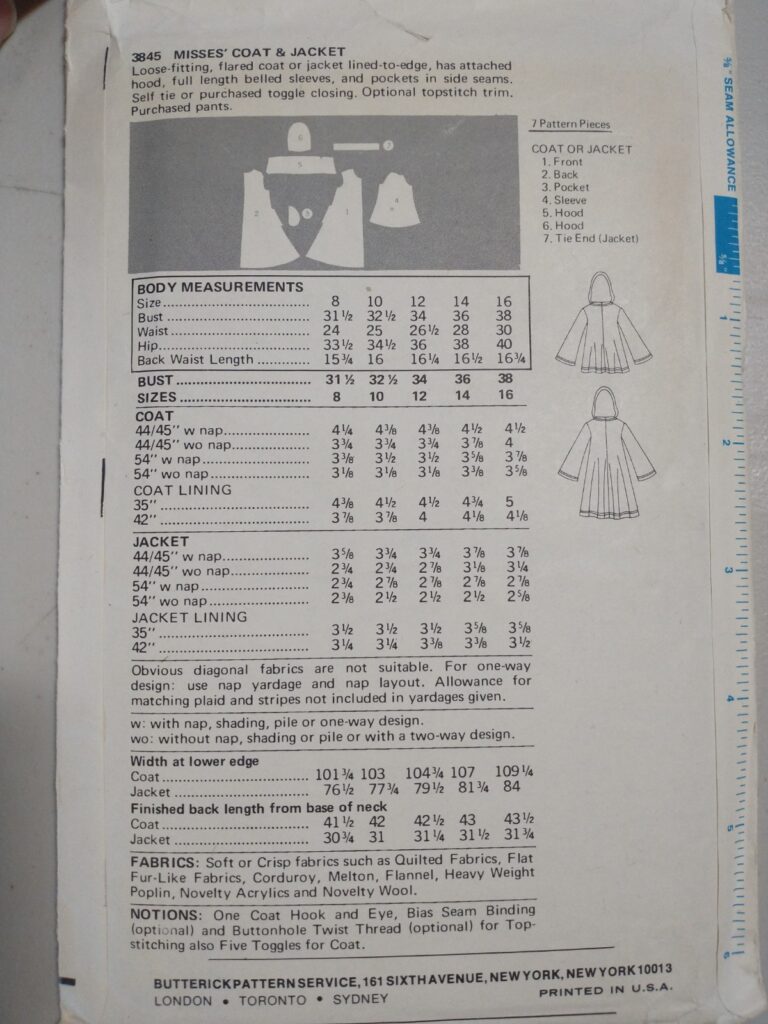

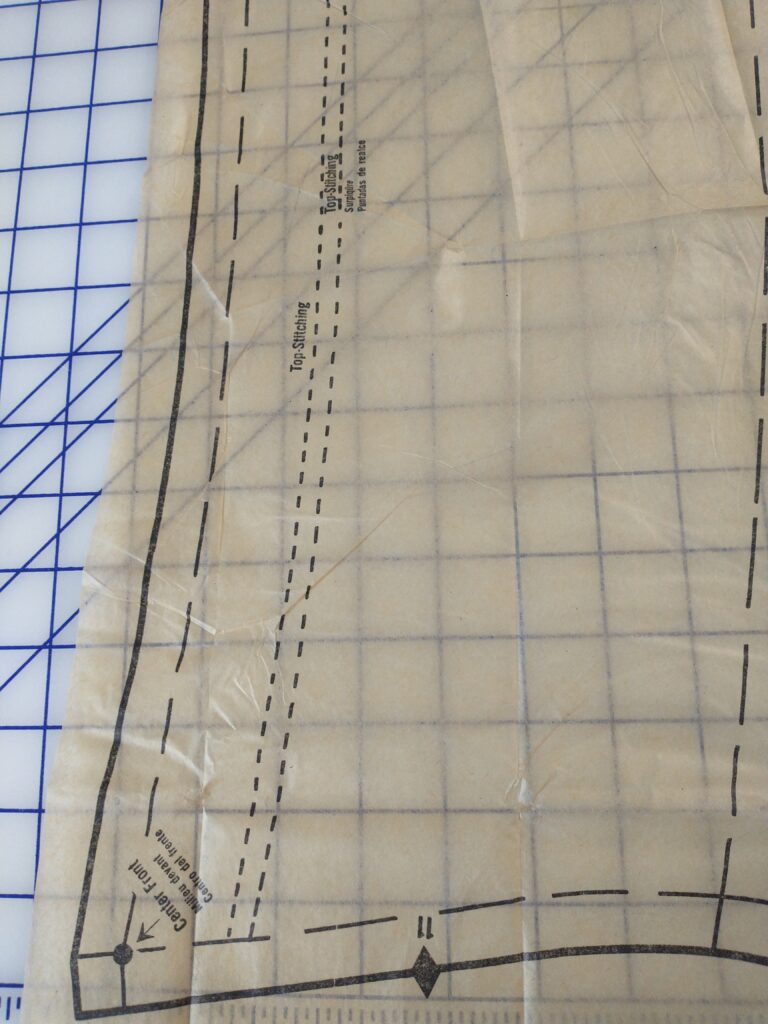
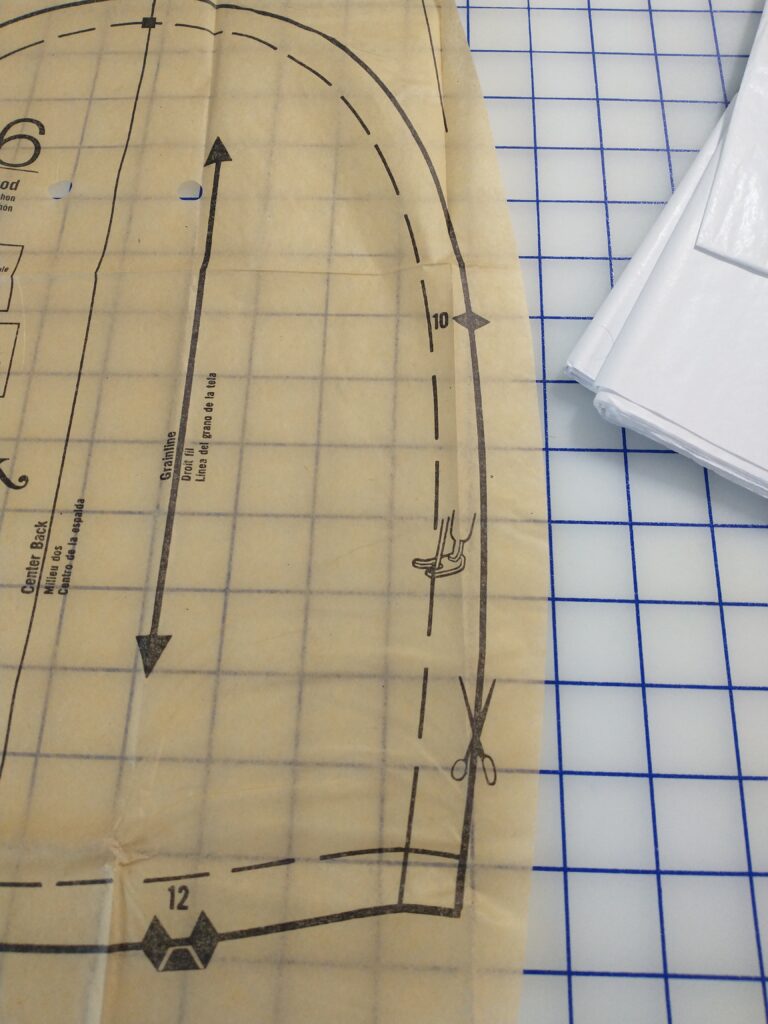
The pattern instructions and the pattern pieces actually contain a lot of information, something I wasn’t expecting from an older pattern. The instructions include an extensive list of sewing glossary terms, as well as a short tutorial on how to sew with fur (one of the fabric options on the envelope). I also appreciated that the instructions were split between the two designs, with the cutting layout and instructions on how to sew each design printed as their own section. The pattern pieces themselves actually have the sewing lines and any decorative stitching lines marked on them, along with cute drawings of a pair of scissors and a presser foot to indicate which line was which. It’s a refreshing change from the modern sewing patterns that I’ve worked with, where each pattern piece is a mess of lines that overlap and sewing instructions lump every design option on each step. I’m glad I won’t have to play match the lines and sewing instructions while sewing this jacket.
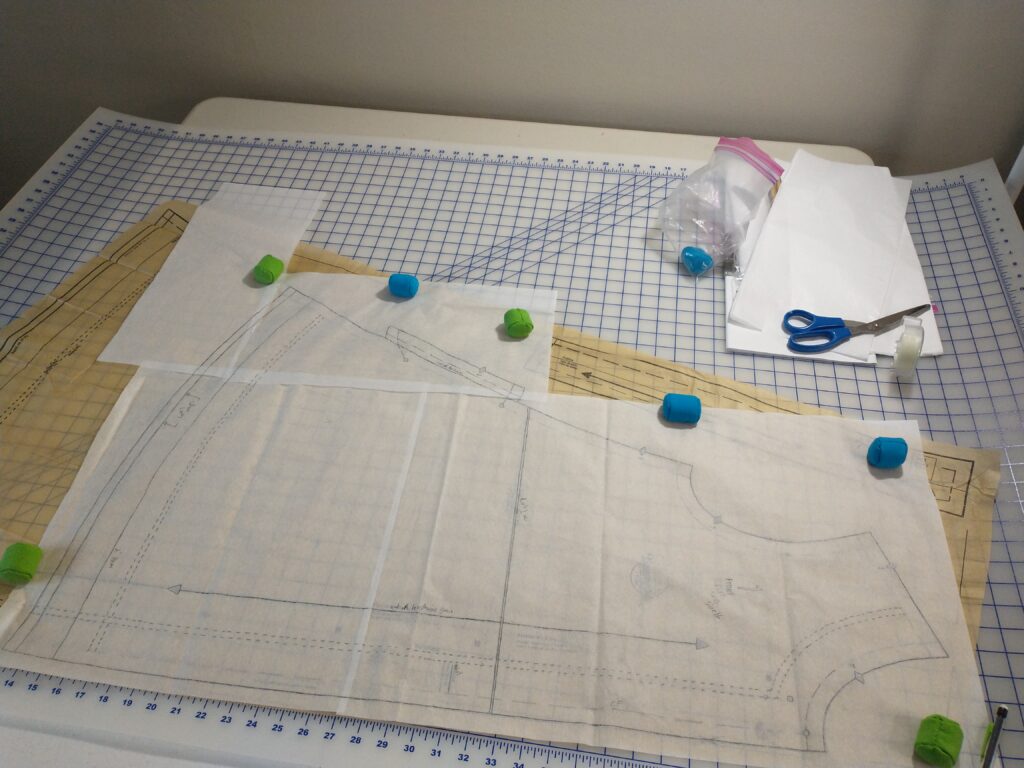
Of course, a scissor blade did not come within an inch of the original pattern pieces. Firstly to preserve the pattern as much as possible, but also because I’ve been an avid follower of tracing my sewing patterns. I started tracing my patterns about seven years ago after borrowing a sewing pattern from a friend, and I wish I started sooner. I found that tracing my patterns not only preserves the pattern for future use whenever I need to use a different size or design, but it’s also helped me better understand the sewing instructions. When I’m tracing a pattern, I need to mark down everything—every line, every little sewing note printed on the pattern, and every little weird arrow, square and circle on each pattern piece. Because I’m so focused on all these details while I’m tracing, it’s easier to recall where each marking is located when it’s mentioned in the instructions. So, instead of trying to find and hoping I marked the little square on the center of the sleeve, that little square I traced now makes sense. It’s the same with all the triangle notches on pattern pieces. It wasn’t until I started tracing them that I understood how important they are when I’m sewing a garment together.
You don’t need a lot to trace sewing patterns. I’ve been using packs of white gift tissue paper, a mechanical pencil, and scotch tape for years. Although, I do plan to upgrade to rolls of better quality tracing paper once I run out of tissue paper.
The Fabric & Final Thoughts

The fabric I’m using for this jacket is a super snuggle flannel in an antique rug pattern and a sage green satin for the lining. I thought that the rug pattern had that funky early 70s vibe without being too loud, as I would also like this jacket to be subtle enough to wear to work.
I’m both excited and nervous about sewing this jacket. I’m excited because I love all the design details, but I’m also nervous because I’ve never sewed a jacket before. I felt the same way when I started on the Victorian coat for my husband last year. I think it’s because there’s so many pattern pieces and I’m not familiar with using a coat pattern. And I’ll admit that’s the reason why it took me all of February to motivate myself to get started. But with this blog to help keep me accountable, I’m ready to push myself out of my simple pattern comfort zone and learn to sew something new!
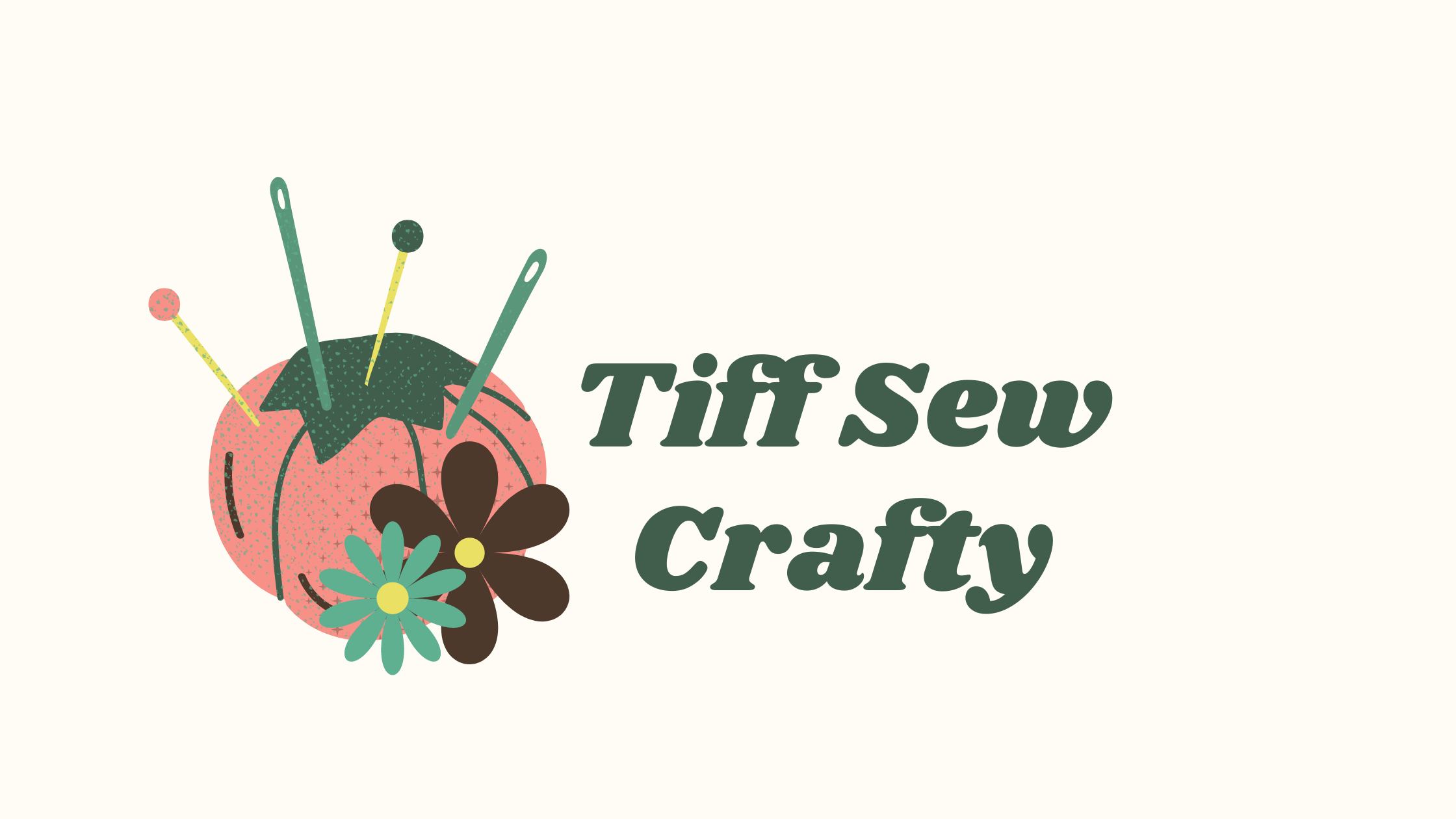


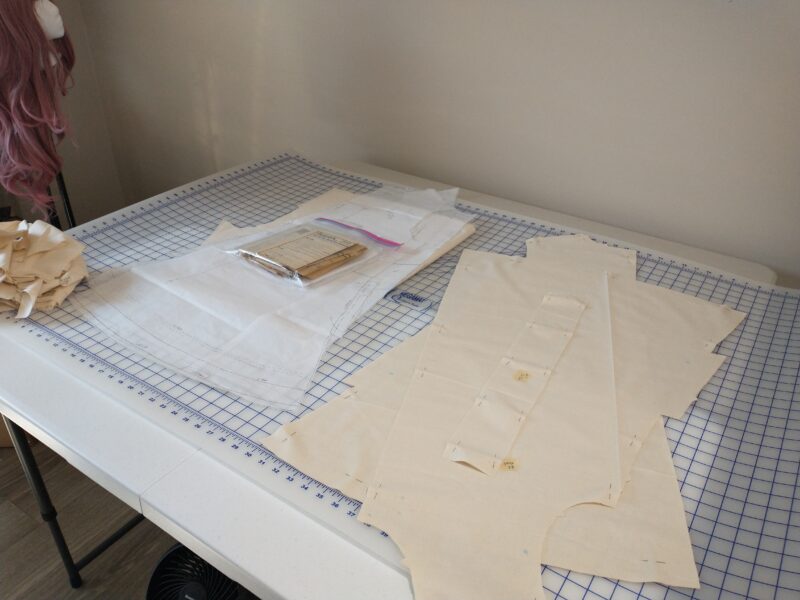


1 Comment
Add Yours →Can’t wait to see this one on you!